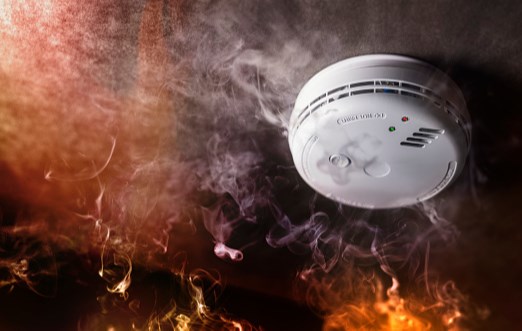As residents turn the heat on in their homes for our cooler nights, the Queen Creek Fire and Medical Department wants to highlight the importance of staying safe. According to the National Fire Protection Association (NFPA), heating fires are the second leading cause of home fires and home fire injuries.
With a few simple tips and precautions, you can prevent most home heating fires from happening.
One of the most dangerous things you can do is put a space heater too close to things that can burn (such as upholstered furniture, clothing, mattresses or bedding).
- Never use a space heater overnight in the room where you are sleeping.
- Place heaters at least three feet away from flammable objects.
- Keep a properly maintained smoke detector on all levels of your home and close to sleeping areas.
- Never leave a space heater unattended.
- Check for fraying or splitting wires, or overheating. Have problems repaired by a professional before operating the space heater.
Gas heating equipment can also lead to tragedy if not installed or used properly. These products are associated with both fire and carbon monoxide poisoning.
- All new un-vented gas-fired space heaters are equipped with an oxygen depletion sensor (ODS). An ODS detects a reduced level of oxygen in the area where the heater is operating and shuts off the heater before a hazardous level of carbon monoxide accumulates. These heaters also have labels that warn users about the hazards of carbon monoxide.
- If you have an older un-vented gas fired space heater that does not have an ODS, consider replacing it with a new, ODS- equipped model.
- If the pilot light of your heater should go out, remember these tips:
-
- Allow five minutes or more for the gas to go away before trying again.
-
- Do not allow gas to accumulate.
-
- Light the match before you turn on the gas to the pilot. This avoids the risk of a flashback, which could occur if you allow gas to accumulate before you are ready to light the pilot.
IF YOU SMELL GAS, DO NOT ATTEMPT TO LIGHT THE APPLIANCE. Turn off all controls and open a window or door. Leave the area, and then call a gas service person.
Often called the "invisible killer," about 230 people die each year from carbon monoxide (CO) poisoning related to fuel burning household appliances such as furnaces, space heaters, water heaters, clothes dryers, kitchen ranges, wood stoves and fireplaces.
When inhaled, carbon monoxide, a tasteless, odorless gas, is easily absorbed into the blood. The gas is lethal when it replaces the amount of oxygen needed to sustain heart and brain function. Symptoms of carbon monoxide poisoning such as headaches, fatigue, weakness, shortness of breath, and nausea are often dismissed as flu-like symptoms, even by doctors.
The NFPA recommends installing a CO alarm in a central location outside each sleeping area and interconnecting those alarms, so when one sounds, they all sound.
For more information, go to QueenCreekAZ.gov/SafetyTips.



